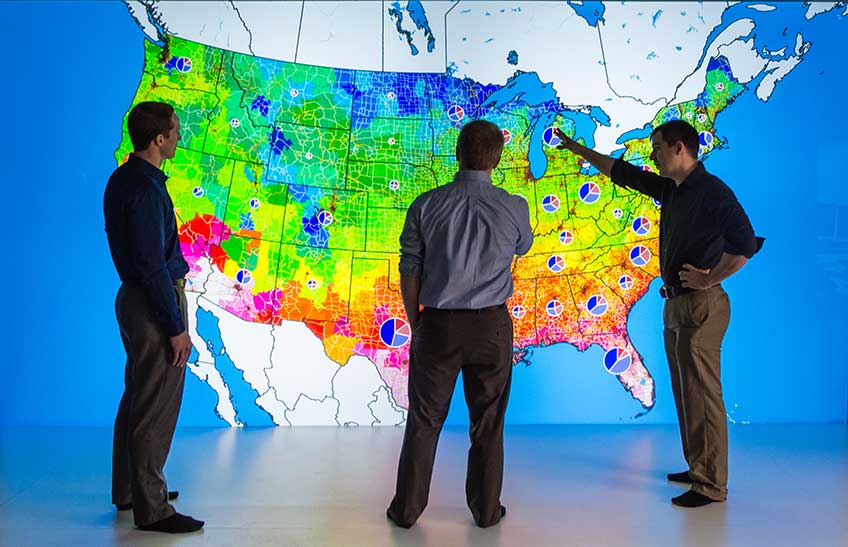NREL's Past Collaboration with GM Continues to Proffer Rewards for Battery Electric Vehicles
Lab-Developed Technology with Cutting-Edge Functionality Integrated into GM BEV 2 BOLT Energy-Assist Application
One of the largest impediments to the mass adoption of battery electric vehicles (BEVs) in the United States is range anxiety—or, consumers’ fear that they will be stranded because the vehicle has insufficient battery power to get them to their destination. A 2012 NREL collaboration with General Motors (GM) continues to inform the improvement of industry apps that help allay range anxiety and increase driver freedom.

The GM BEV 2 BOLT Energy-Assist Application helps BEV drivers map out their driving plans, forecasting charge and discharge events. The app displays energy range and builds routes that combine driving and charging plans when drivers are traveling to destinations beyond vehicle range. The app also monitors vehicle driving to build in the active guarantee that drivers can reach their destinations.
NREL assisted GM in developing a method for estimating energy usage in a vehicle under a 2012 Cooperative Research and Development Agreement (CRADA), which resulted in a patent issued in 2016. NREL’s Mobility, Behavior, and Advanced Powertrains Group Manager Jeff Gonder and Senior Engineer Eric Wood authored the original patent in collaboration with GM’s Sai Rajagopalan. The app leverages and builds on the method for estimating energy use from the original 2012 CRADA.
“It’s exciting to see the results of collaborative research between GM and NREL make their way into the market and ultimately into the hands of consumers,” said Wood. “Connectivity-enhanced route guidance is a very cost-effective way to improve the user experience for electric vehicle owners.”
GM recently announced that the BEV 2 BOLT Energy-Assist Application has been awarded a 2018 Boss Kettering Award, which recognizes internal projects with the highest technical achievements.
NREL partnerships, like the one with GM, provide an opportunity for the lab and industry to work together to accelerate the movement of renewable energy and energy-efficient solutions into practical applications. This type of collaboration continues to be an effective way to build out industry prototypes from research and development concepts as a means of expanding the clean energy economy.
GM and the Vehicle Technologies Office within the U.S. Department of Energy’s Office of Energy Efficiency and Renewable Energy funded the research.
Learn more about NREL’s transportation research and working with us.
Last Updated May 28, 2025
